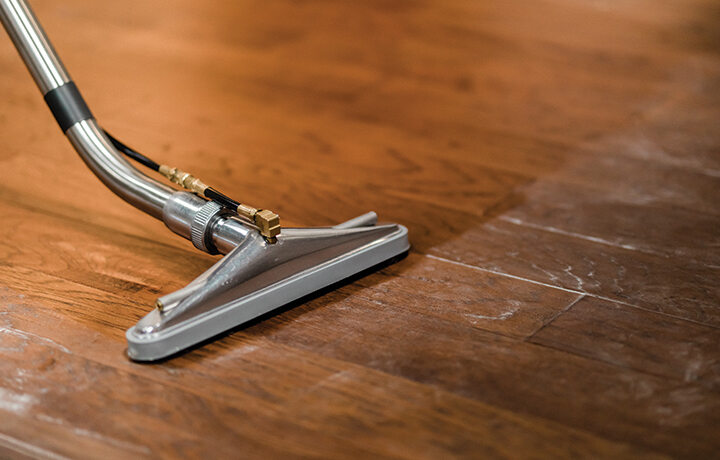
There are many methods to clean granite countertops. These methods will help you make your countertops shine in no matter how little time it takes.
Dish soap
Whether you have granite, marble or some other form of countertop, cleaning your countertops is an important part of maintaining your home. If you don't clean your countertops properly, dirt and stains can ruin the smooth finish.
It is easy to restore granite countertops to their original glory. The key is to use a nontoxic, mild cleaner.
Major manufacturers make a variety of good granite cleaners. The Environmental Working Group can provide information on the best products and how to purchase them.
To clean granite countertops, you can use warm water and dish soap. Water spots can be removed with fine steel wool. To polish the counters to a shiny shine, you can also use cooking oils.
Granite-specific cleaners provide a deeper cleaning. These cleaners can be purchased at a local store or made at home.
Baking soda

Baking soda works well to clean granite countertops. Baking soda is safer than other methods and can be used to clean granite countertops. However, it can also damage your granite, so make sure to choose the right cleanser.
Baking soda can be used to remove stains. It is not recommended to be used on natural stones.
Baking soda may cause discoloration in granite with a higher pH. A solution of hydrogen peroxide and water can be made to clean your granite countertop. Or, you can make a paste by mixing water with baking soda. This paste is thick and will protect granite countertops from staining.
Hydrogen peroxide
It is possible to remove discolorations from granite countertops by using hydrogen peroxide. You should be careful with how you clean it. You should not use the solution more often than necessary to damage granite. It can also cause dark granite colors to turn yellow.
It is best to use mild dish soap with water to clean granite countertops. This will be sufficient for most clean ups. However, you may want to use a different cleaning method if there are serious stains.
Baking soda and water can be used to remove oil-based stains. This combination can also remove water-based stains.
Hydrogen peroxide or ammonia can be used to remove stubborn stains. This technique is best used after a meal.
Oil-based stain

It's not an easy task to remove oil-based stains off granite countertops. There are however, some methods. Baking soda and water are two ingredients that can remove stubborn oil stains. A natural stone cleaner is another option. To remove the stain, you can use a soft bristle brush and a Brillopad.
Hydrogen peroxide is another option. While hydrogen peroxide is an effective stain remover for granites, it can also cause color problems in darker stones. Mix hydrogen peroxide and a liquid cleanser to be able to use on granite. Mix the two ingredients together to form a paste. Apply the paste to the stain and then cover with plastic wrap. Cover the paste with plastic wrap for about 24 hours. Once it is dry, take out the plastic wrap.
Preventing stain formation
To avoid any damage to your granite countertops, it is essential that they are kept clean and free from stains. You can clean your granite countertops with mild detergent, water and a clean sponge. A special granite cleaner can also be used. Use a microfiber fabric to protect the sealant.
Granite is a durable stone. Granite is stain-resistant, but it can also be damaged by abrasive cleaning products. Acidic cleaners may also cause it to lose its sealant.
You can clean water stains from granite countertops using baking soda and water paste. You can apply the paste to stain and leave it for at least one hour. After that, you can rinse it off. Repeat the baking soda and water paste several times until you get rid of stubborn stains.
FAQ
Are you allowed to clean before a cleaner arrives
Be prepared for anything if you do decide to clean before a cleaner arrives. It is possible for a cleaning service to come and clean up your place, but they may not know what to do because you didn't plan ahead.
This is the best way to avoid it. This list could include a list that includes furniture, floors, carpets, and rooms. You should also keep a list of tasks for each item.
It is also important to consider the time required to complete these tasks. In the example of a large living space, you may choose to start with the carpet, then move on to the walls and finally the floors.
It is important to have a time estimate for each task, and to stick with it. If you don't, you risk having the cleaners leave after completing half the job.
Most of the time, when hiring someone to clean our home we don’t give them any direction. We expect them, based upon their experience, to find the best place to clean our home.
This is why you should create an inventory of all areas, tasks, time frames, and locations. A detailed plan will ensure that your cleaners have all the necessary tools to complete the job.
How long can I leave my air conditioner on after cleaning?
After cleaning, leave the air conditioner running for at least 30 seconds. During this time, the air inside the house will circulate, which makes it easier to keep the house cool.
What type of tools should you use to clean your house?
Deep cleaning will require heavy-duty equipment, such as vacuums.
You don't need to have as many tools if you are just looking to clean up your home. All you need is a broom and a dustpan.
What is the average time housecleaners work?
Most cleaners work Monday-Friday, 9 a.m. - 6 p.m. Some companies also offer Sunday cleaning.
Many cleaners also provide after-school and weekend cleaning.
What does a deep cleanse include?
Deep cleaning involves cleaning all surfaces, including walls, baseboards, doors, windows, and other areas. This includes dusting, vacuuming and mopping, scrubbing, polishing dishes, wiping countertops, sweep floors, and emptying trashcans.
Other services offered by some companies include spring cleaning, end of tenancy cleaning or pet care.
How often should I have my house cleaned?
It all depends upon how dirty your house is. It all depends on how messy your household is. But if there are only a few spots, you might be able to do it once a month.
You may also need to clean up more often if there have been guests or a party.
Statistics
- You can estimate that payroll taxes will cost 18 percent of your labor cost, according to Cleaning 4 Profit. (freshbooks.com)
- Typically, you can charge customers about $90 to clean a house that's less than 1,000 square feet and $250 for a house that's 3,000 square feet or more, according to Home Advisor. (freshbooks.com)
- House cleaners on the lower end of that spectrum, the bottom 10% to be exact, make roughly $21,000 a year, while the top 10% makes $36,000. (zippia.com)
- You must see the house in question when estimating all private house cleaning jobs, according to Cleaning 4 Profit. (freshbooks.com)
External Links
How To
How to clean upholstered furniture
Because of the complex structure of upholstered furniture, which has multiple layers and different fabrics, it is difficult to clean. It takes patience and skill. You can use steam cleaning or dry cleaning. Each method has its advantages and disadvantages. In this article we'll discuss how to clean upholstery.
Steam cleaning is the most popular method of cleaning upholstered furniture. To remove dirt and stains from fabric, steam cleaning uses hot water combined with detergent. This method is most effective if there is no dust in your upholstery. However, if any dust or moisture is left after the first cleaning, you should use another cleaning solution. You must not steam clean leather upholstery. Leather absorbs water and becomes soft so it cannot withstand heat. Leather is porous so steam can penetrate it, causing damage.
For upholstered furniture made of only cotton or synthetic fabrics, dry cleaning is recommended. Dry cleaning removes soils and stains without causing damage to the fabric. Dry cleaning is good for light to moderate soils, such as food residue, pet hair and mud. To remove these types of stains, you can use a vacuum with a brush attachment.
Upholstering furniture made with natural fibers can be cleaned using washing. Washing usually involves soaking the fabric in warm water mixed with soap and mild detergent. Next, wash the fabric with cold water. Use a sponge/cloth to gently rub down the fabric. After rinsing the fabric, apply a small amount to the stain. Allow the mixture to sit for a few minutes before wiping away any excess liquid. The fabric should be rinsed again. There are many shops that sell washable upholstery.
You can make your own upholstery cleaner by making your own solution. In a large bowl, combine 1/4 cup dishwashing detergent, 1 cup vinegar, and 2 cups baking soda. Fill the bucket halfway with warm water. The upholstery should be soaked in the solution overnight. Use cold water to rinse the fabric. Repeat this step once every two weeks to keep your upholstery looking new.
You can wax instead if chemicals are not your thing. You can protect your upholstery from fading, cracking, staining and other damage by waxing. Placing a layer of plastic wrap over the area you are going to wax will help prevent scratches. Apply a layer with a foam application tool. Wait until the wax dries completely. Then remove the plastic wrap.